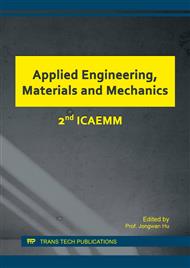p.279
p.286
p.293
p.303
p.310
p.316
p.321
p.326
p.331
Modeling of the Electromagnetic Drive Torque on the Permanent Magnet in a Novel Drive Mechanism
Abstract:
Analytical models of vibration exciters and shakers are of great importance to their dynamic analysis and control. Furthermore, the modeling of the drive torque/force of the driving principle plays a key role in the modeling of an entire driving system. This paper aims to find a more detailed analytical model of the electromagnetic drive torque on the permanent magnet with a new shape in a novel driving mechanism. The proposed model contains all the related parameters instead of treating them as only one variable. Two methods of the permanent magnet installation are firstly introduced and compared. Based on the magnetic charge model, torque models of the bipolar cylindrical permanent magnet and partial bipolar cylindrical permanent magnet are then obtained. Thereupon then the final model with a composite shape is gained by combining the cylindrical and partial cylindrical ones. Moreover, all analytical models are verified by finite element method and it is found the final detailed model can characterize the electromagnetic drive torque in a high accuracy.
Info:
Periodical:
Pages:
310-315
Citation:
Online since:
October 2017
Authors:
Price:
Сopyright:
© 2017 Trans Tech Publications Ltd. All Rights Reserved
Share:
Citation:


